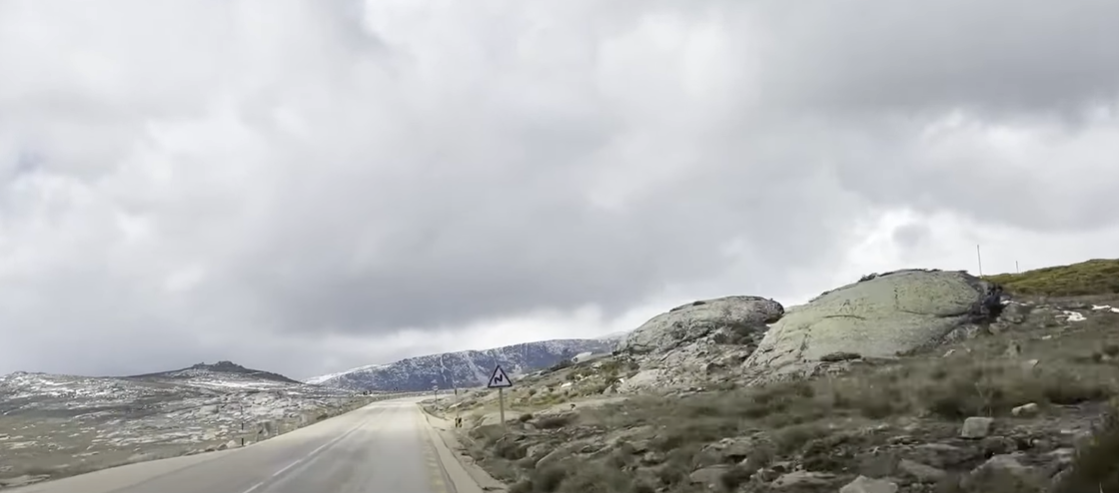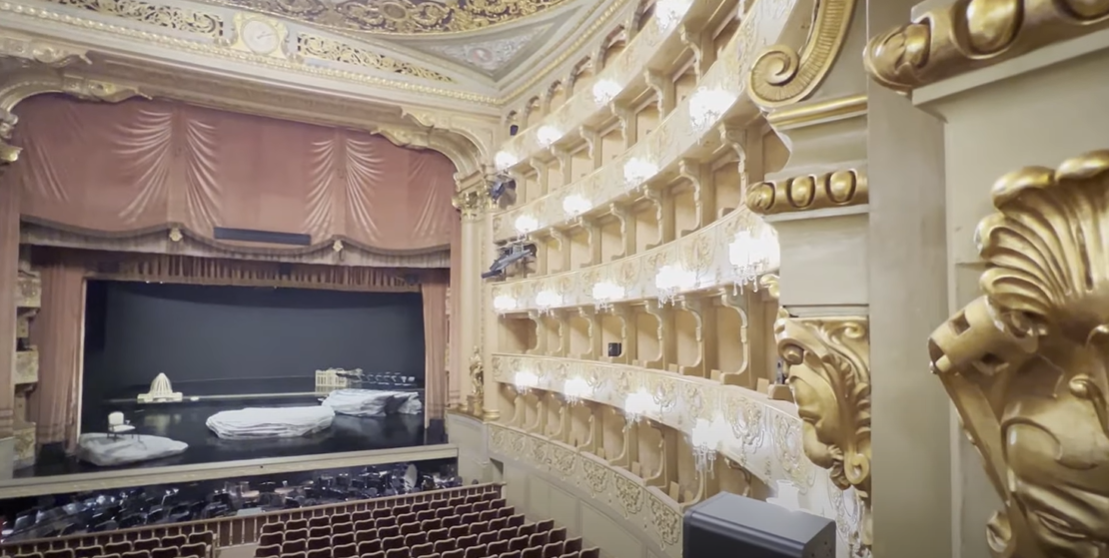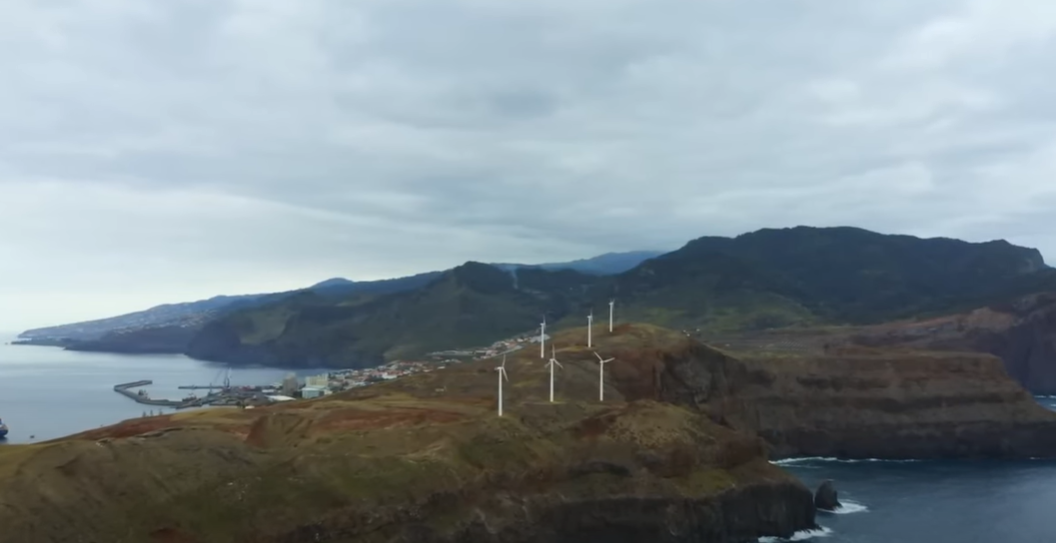
Yes, it does snow in Lisbon, but very rarely. Lisbon, the charming capital of Portugal, experiences a mild climate most of the year. Snowfall in Lisbon is an uncommon event. When it snows, it's usually a light dusting that quickly disappears.
I remember the first time I saw snow in Lisbon. It was a magical sight of the snow capped mountains, with flurries gently covering the city's iconic yellow trams and ancient rooftops. Though brief, the moment felt special, as if the city had transformed overnight. Sharing this rare phenomenon with locals, who were equally surprised and delighted, made the experience unforgettable.
Has it Ever Snowed in Lisbon?
Yes, it has snowed in Lisbon, albeit extremely rarely. Lisbon's Mediterranean climate typically means mild winters with rare occurrences of snowfall. In fact, the last significant snowfall in Lisbon was in 1954. However, there have been a few light snowfalls in more recent years, such as in 1994 and 2018, but they were brief and didn't accumulate much. As someone who has visited Lisbon, I can attest to the excitement and novelty whenever snowflakes grace our city. Despite its rarity, when snow does fall in Lisbon, it creates a magical atmosphere, transforming familiar sights into something enchanting. And viewing it from any of the famous ski resorts in Lisbon makes it even more beautiful.
Average Weather Conditions in Lisbon
Average Weather Conditions in Lisbon vary throughout the year, making it an enticing destination for travellers. With its Mediterranean climate, Lisbon enjoys mild winters and warm summers. The city experiences an average of 2,800 hours of sunshine annually, attracting visitors seeking a sunny escape. Winter season is typically mild, with average temperatures ranging from 8°C to 15°C, and occasional rainfall. However, snow is a rare occurrence in Lisbon, with only a few instances in the past century.
As a resident of Lisbon, I've seldom witnessed snowfall from only ski resort, but when it does happen, it creates a magical atmosphere in the city and in the mountainous regions. Overall, warm temperatures though, Lisbon's climate offers pleasant conditions for exploring its charming streets and historic landmarks year-round.
Factors Influencing Snowfall in Lisbon
It does snow in Lisbon, but snowfall in Lisbon is a very rare event. As someone who has lived in the area, I can attest to the rarity of seeing the city draped in white. The mild, typically Mediterranean climate, characterized by wet winters and hot, dry summers, plays a big part in this. Snow in Portugal is so uncommon due to several factors, including its geographical location, climate influences from the Atlantic, and more localized effects such as the urban heat island phenomenon.
Latitude
Lisbon's position at approximately 38 degrees north latitude is similar to that of other cities that experience little to no regular snowfall. In my own experience living here, the winter months, although they can be chilly, seldom see temperatures low enough for snow. The cold here is more a damp chill rather than the biting cold necessary for snow, reflecting Lisbon's temperate maritime climate.
Proximity to the Atlantic Ocean
Living near the coast of Lisbon, I often feel the influence of the Atlantic Ocean, which plays a crucial role in keeping the winter temperatures relatively mild. This proximity to a large body of water acts as a thermal buffer, softening the seasonal cold that could otherwise support snowfall. During my winter walks along the Tagus estuary, the ocean breeze is cool but never harsh enough to support freezing temperatures, underscoring the ocean's moderating effect on local weather.
Gulf Stream Influence
The Gulf Stream's impact on Lisbon's climate is another factor against frequent snowfall. This powerful ocean current carries warm water from the Gulf of Mexico across the Atlantic, warming the air that reaches Lisbon. The presence of the Gulf Stream is evident in the mild winter weather, which allows for outdoor activities unusual for the season in colder climates. Reflecting on past winters, I remember enjoying café terraces in December, a testament to the mildness brought by the Gulf Stream.
Urban Heat Island Effect
The urban heat island effect is particularly noticeable in Lisbon, where the concentration of buildings and human activities results in higher temperatures than in outlying areas. This effect keeps the city warmer, especially at night. From my observations, evenings in Lisbon are warmer than in the countryside, where daytime temperatures drop more sharply. This disparity often prevents the city from reaching the freezing temperatures necessary for snowfall, even when nearby rural areas might see frost.
How To Prepare for Winter in Lisbon?
Preparing for winter in Lisbon involves adjusting to its mild but variable climate. While Lisbon rarely experiences snow, mild temperatures can dip to around 8°C in January. Having spent several winters in Lisbon, I've found that staying comfortable doesn’t require heavy gear, but rather layers that can be easily adjusted. Here’s a step-by-step guide to help you get ready:
-
Sun Protection: Even in winter, Lisbon receives plenty of sunlight. Always carry sunglasses and apply sunscreen during the day. The low winter sun can be surprisingly strong, especially when reflecting off the city's famous white cobblestones.
-
Explore Indoors: Take advantage of Lisbon’s rich indoor attractions like museums and galleries. They offer a warm escape from the chilly winds. I spent many cozy afternoons discovering the history and art of northern Portugal, which was not only educational but also comfortably warm.
-
Local Cuisine: Warm up with traditional Portuguese comfort foods. I found dishes like ‘Caldo Verde,’ a warm kale and sausage soup, to be particularly comforting on cooler days.
-
Public Transport: Utilize Lisbon’s extensive public transportation on colder days. It’s efficient and keeps you out of the unpredictable weather. I often rode the iconic trams to explore different neighborhoods without braving the cold for too long.
-
Community Events: Participate in local winter events. Lisbon hosts various festivals and markets in winter, which are great for experiencing the local culture and staying engaged with the community. My favorite was the Christmas market at Parque Eduardo VII, which filled the air with festive spirit and delicious smells.
These tips not only made my winters in Lisbon enjoyable but also helped me connect more deeply with the city’s vibrant lifestyle and warm community.
What are the Best Winter Activities to Do In Lisbon?
The best winter activities to do in Lisbon are exploring historic sites, sampling local cuisine, and attending festive events. Known for its mild winters and rare snowfall, Lisbon offers a delightful array of activities perfect for exploring its unique charm during the cooler months. While snow in Portugal is uncommon, the city’s vibrant culture and picturesque settings do not fade with the colder weather. Instead, they transition into a season filled with warmth in the streets, radiant winter sun, and bustling festivals that showcase Lisbon's lively spirit. This creates an ideal setting for a variety of winter activities, especially for winter sports enthusiasts, that both locals and tourists can enjoy.
Exploring Historic Sites

One of my favorite winter activities in Lisbon is visiting its historic sites. The milder temperatures make walking through Lisbon's steep, cobblestone streets much more comfortable. I particularly enjoy exploring the neighborhoods of Porto, Alfama and Belém. Alfama, with its ancient buildings and narrow lanes, feels almost mystical in the winter light. In Belém, the Jerónimos Monastery and Belém Tower stand majestic against the crisp blue skies, and fewer tourists mean you can appreciate the architecture and the history without the crowds.
Sampling Local Cuisine

Winter is the perfect time to dive into Lisbon’s rich gastronomic scene. The city’s cafes and restaurants exude a cozy ambiance, ideal for enjoying traditional Portuguese dishes. I love indulging in pastéis de nata from a local bakery, still warm from the oven, on a chilly morning. The famous Bairro Alto offers a plethora of dining options where you can savor seasonal dishes like bacalhau (codfish), which is a staple in Portuguese cuisine, often enjoyed during the holiday season.
Attending Festive Events

Lisbon’s winter calendar is filled with festive events that light up the city. From Christmas markets to New Year's festivities, the city is alive with celebrations. The Christmas markets are particularly enchanting, offering handcrafted goods and traditional festive treats. I always make it a point to visit the Wonderland Lisboa, a festive fair that transforms Eduardo VII Park into a magical holiday village complete with a Ferris wheel and ice skating rink.
Each activity offers a different slice of Lisbon's winter charm, enriching your visit with cultural depth and warmth despite the cooler weather.
Rare Weather Events in Lisbon
Lisbon experiences unusual weather phenomena, although they occur infrequently. From my own years living in the city, I've witnessed a few remarkable events that both locals and visitors find astonishing. Data indicates that these rare occurrences may surprise those unfamiliar with the region's typical climate patterns.
Snowfall in Lisbon

It does snow in Lisbon, but it's a rare spectacle. The city's last significant snowfall was in 2006, an event so rare that it turned into a historical moment for residents. As a lover of rare mild weather events, I remember the city draped in white, creating a serene yet unfamiliar landscape that lasted briefly but was talked about for years.
Hailstorms
While not common, hail can occur during some of Lisbon's most turbulent weather episodes. These events are particularly intense when they happen, often during the spring. I recall a day when the skies suddenly darkened and large hailstones drummed against the rooftops, an episode that was both thrilling and slightly alarming.
Tornadoes
Tornadoes are exceptionally rare in Lisbon, but minor tornadoes and waterspouts have been documented near the coast. Witnessing a waterspout off the Lisbon coast is a mesmerizing experience; its powerful spin and the calm after the storm are blending the beauty and ferocity of nature in one scene.
FAQs on Does it snow in Lisbon?
1. What are the coldest months in Lisbon?
The coldest months in Lisbon are January and February. During these months, the temperature can drop to around 8°C, and the city experiences its lowest average temperature of the year.
2. How often does Lisbon experience frost?
Frost in Lisbon is rare. The city's coastal location and colder temperatures generally prevent frost from forming, though occasional colder snaps might bring light frost to the surrounding areas.
3. Is there any specific area in Lisbon that receives more snow than others?
Snow in Lisbon is uniformly rare across the city. However, the higher elevations surrounding Lisbon, such as the Sintra, the highest Mountain range, are slightly more prone to seeing snowfall.
4. How do residents in Lisbon typically prepare for winter weather?
Deciding what to wear in Lisbon for winter months is important. So residents prepare by wearing warmer clothing and occasionally using heating in their homes. Since severe winter weather like heavy snow or frost is uncommon, extensive preparations are not typically necessary.
5. What are some winter activities popular in Lisbon during the colder months?
During the colder months, Lisbon residents enjoy visiting museums, indulging in the local gastronomy, and participating in festive activities around Christmas and New Year. Outdoor activities such as walking along the Tagus River or exploring historical neighborhoods remain popular due to the mild weather.
